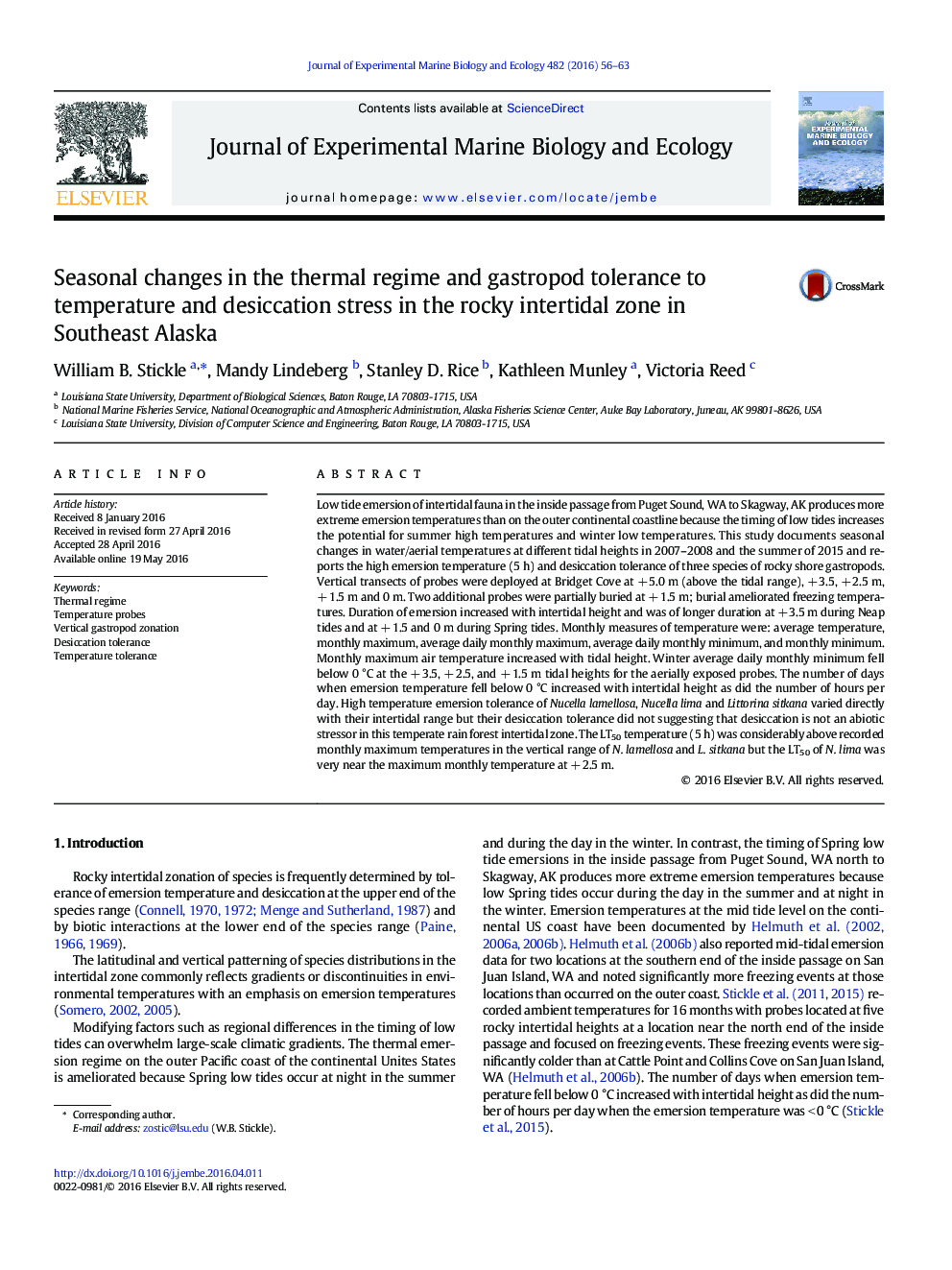| کد مقاله | کد نشریه | سال انتشار | مقاله انگلیسی | نسخه تمام متن |
|---|---|---|---|---|
| 4395236 | 1618393 | 2016 | 8 صفحه PDF | دانلود رایگان |
• Temperature extremes increased in intensity and duration with intertidal height.
• Average daily temperature declined as a percentage of maximum temperature in the summer.
• Temperature tolerance increased as a function of zonation range.
• Desiccation tolerance was of short duration and did not vary with intertidal zonation.
• The temperate rainforest climate ameliorated high temperature and desiccation stress.
Low tide emersion of intertidal fauna in the inside passage from Puget Sound, WA to Skagway, AK produces more extreme emersion temperatures than on the outer continental coastline because the timing of low tides increases the potential for summer high temperatures and winter low temperatures. This study documents seasonal changes in water/aerial temperatures at different tidal heights in 2007–2008 and the summer of 2015 and reports the high emersion temperature (5 h) and desiccation tolerance of three species of rocky shore gastropods. Vertical transects of probes were deployed at Bridget Cove at + 5.0 m (above the tidal range), + 3.5, + 2.5 m, + 1.5 m and 0 m. Two additional probes were partially buried at + 1.5 m; burial ameliorated freezing temperatures. Duration of emersion increased with intertidal height and was of longer duration at + 3.5 m during Neap tides and at + 1.5 and 0 m during Spring tides. Monthly measures of temperature were: average temperature, monthly maximum, average daily monthly maximum, average daily monthly minimum, and monthly minimum. Monthly maximum air temperature increased with tidal height. Winter average daily monthly minimum fell below 0 °C at the + 3.5, + 2.5, and + 1.5 m tidal heights for the aerially exposed probes. The number of days when emersion temperature fell below 0 °C increased with intertidal height as did the number of hours per day. High temperature emersion tolerance of Nucella lamellosa, Nucella lima and Littorina sitkana varied directly with their intertidal range but their desiccation tolerance did not suggesting that desiccation is not an abiotic stressor in this temperate rain forest intertidal zone. The LT50 temperature (5 h) was considerably above recorded monthly maximum temperatures in the vertical range of N. lamellosa and L. sitkana but the LT50 of N. lima was very near the maximum monthly temperature at + 2.5 m.
Journal: Journal of Experimental Marine Biology and Ecology - Volume 482, September 2016, Pages 56–63
